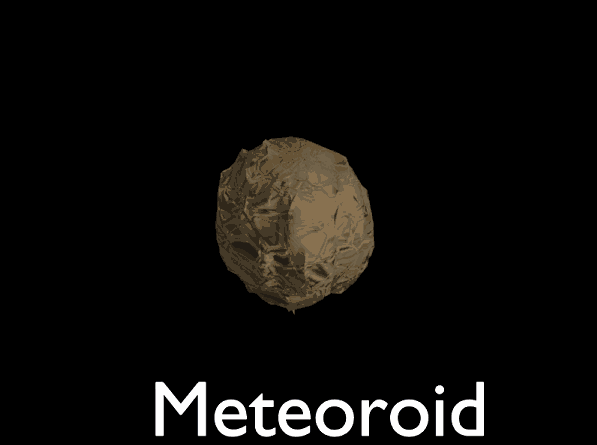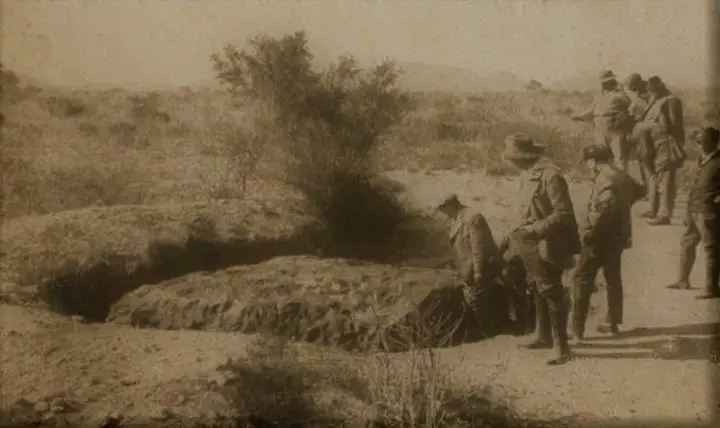 ur planet is filled with cosmic bodies that have fallen on Earth since its creation. An Estimated 25 million cosmic bodies such as meteoroids or micrometeoroids as well as other space debris enter Eath’s atmosphere each day. That is around 15,000 tonnes of cosmic material entering our atmosphere each year. From that, a small percentage ends up falling on Earth. About 17 micrometeorites hit the earth every day, these are the size of small pebbles or rocks that are not able to do much damage. Every now and then a bigger meteorite may hit the earth, but its weight does not surpass a few kilograms. There have been some rare occasions since the existence of Earth where huge meteorites have hit the earth and caused huge damage within the local areas.
ur planet is filled with cosmic bodies that have fallen on Earth since its creation. An Estimated 25 million cosmic bodies such as meteoroids or micrometeoroids as well as other space debris enter Eath’s atmosphere each day. That is around 15,000 tonnes of cosmic material entering our atmosphere each year. From that, a small percentage ends up falling on Earth. About 17 micrometeorites hit the earth every day, these are the size of small pebbles or rocks that are not able to do much damage. Every now and then a bigger meteorite may hit the earth, but its weight does not surpass a few kilograms. There have been some rare occasions since the existence of Earth where huge meteorites have hit the earth and caused huge damage within the local areas.
One of the biggest impacts of a meteorite that humanity has witnessed in modern times (20th century) and that is still making geologists and scientists scratch their heads is the Tunguska meteorite that managed to destroy a 2000 square kilometer forest in the region of Siberia.
However, nothing must compare to the impact that the Hoba meteorite had when it had hit the Earth.
A big piece of metal out of this world
In 1920, within the region of South Africa, near Grootfontein in Namibia, a farmer named Jacobus Hermanus Brits was plowing his field just like any other day. All of sudden the plow screeched to a halt and seemed to be unable to carry on forward. The farmer was curious to see what was in the way of the plow, so he started digging and digging to find a huge piece of metal, which to him seemed out of this world.
The big piece of metal quickly attracted the attention of geologists who confirmed that it was in fact a meteorite. Based on how deep the meteorite was dug in the ground the experts estimated that it was quite recent. It was only later discovered through a carbon footprint analysis that the meteorite landed on Earth approximately 80,000 years ago.

Comprised 84% iron and 16% nickel, with a weight of almost 66 tones, a height of 1 meter, and 2.7 meters squared in length and width, it was considered and still is to date the biggest piece of metal found on Earth. The name Hoba comes from the name of the farm that it was found on, “Hoba West” (name of the farm).
Where is the crater?
The thing that really confused experts at the time of discovery was that there is no crater. A meteorite this size would have created a huge crater upon impact and even in 80,000 years, it would not be enough time for nature to cover it up. Later on, it was debated that the flat shape of the meteorite, may have caused it to slow down when entering Earth’s atmosphere and hit Earth with a low velocity.

However, this piece of metal deserved to be shown as the legend it is, that is the reason why people have created a small crater around it as if it was made by the meteorite itself. Some say that due to its shape and story this may actually be a meteoroid. A meteorite starts as a Meteoroid in a much bigger shape, but as it enters the atmosphere of a planet, due to the high-speed heat is created which may decompose most of the cosmic body.
To some, it may still be a big piece of metal, but to me, it looks like an amazing thing that only the universe knows how many light years it had traveled to end up on our planet.
Avid Writer with invaluable knowledge of Humanity!
Upcoming historian with over 30 million views online.
“You make your own life.”





